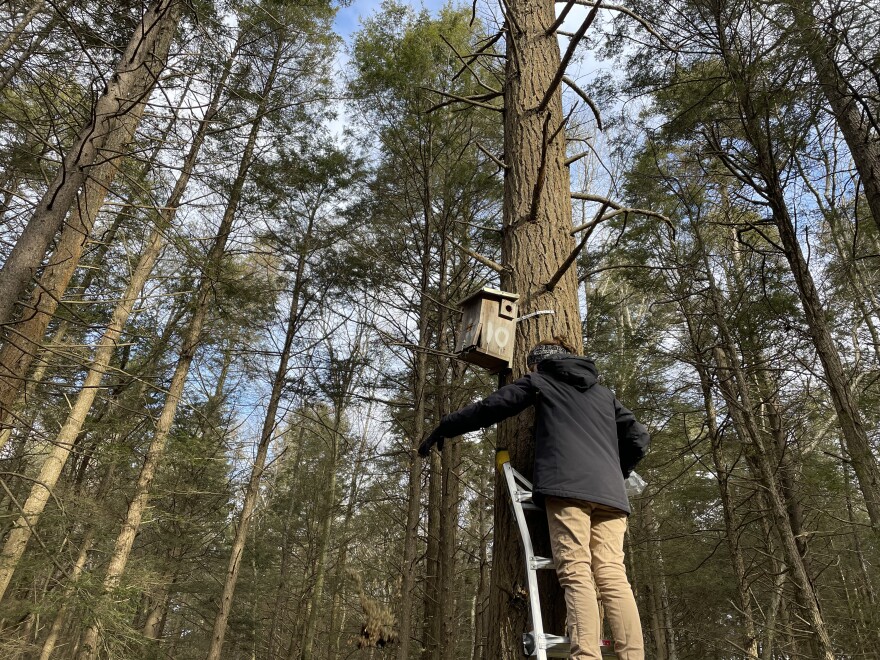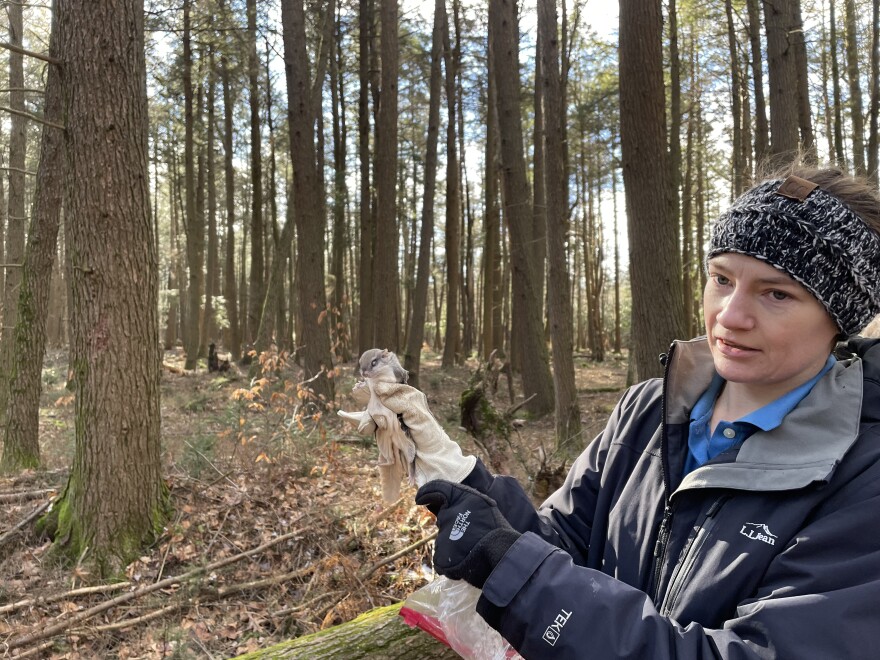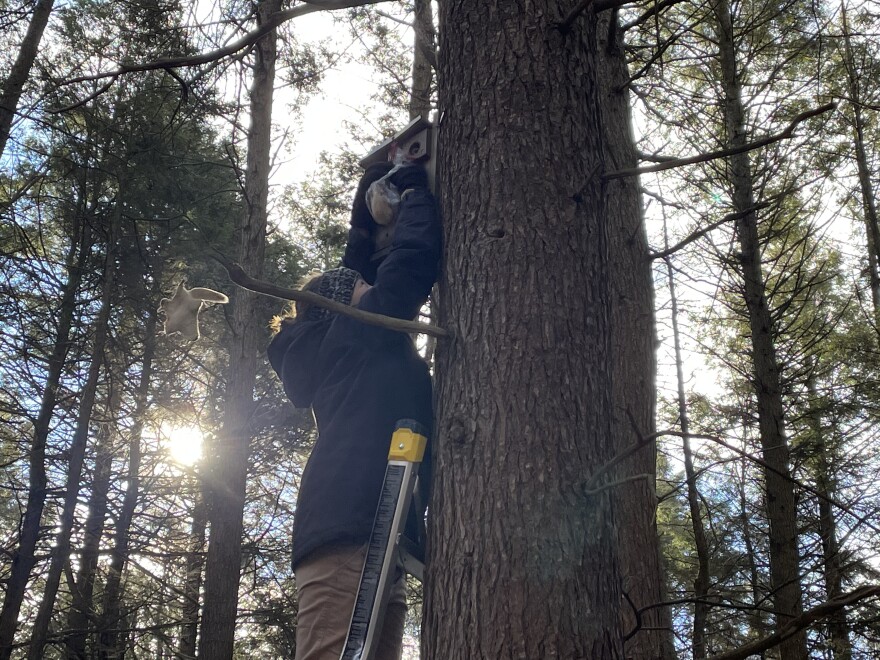BLAKESLEE, Pa. — On a wintry Saturday morning, a group gathered in the Poconos to look for a specific rodent - the northern flying squirrel.
Renae Swayser, an environmental educator for the Wildlands Conservancy, led the hike on Feb. 3. A group of about 15 people joined her to check the nesting boxes at Thomas Darling Preserve near Blakeslee.
There are about 50 nesting boxes placed on trees about 20 feet high. To check them, Swayser climbs a ladder and bangs on the box.
She covers the small opening in the box with a gallon-sized plastic bag to catch the squirrels - they’re squirmy.
After checking a few boxes to no avail, three were found snuggled up in one box. They’re fast, but Swayser caught one in the bag. The clear plastic bag allows her to safely hold the rodent while getting a good look at it.
Swayser identified it as a southern flying squirrel. She can tell by its size, tail, and the color of its fur. Flying squirrels don't actually fly. They have skin flaps called patagia that allow them to glide an average distance of 65 feet.
“The southern flying squirrel... they're not really that rare at all. You can find them pretty much anywhere. But they are nocturnal,” she said. “Southern flying squirrels are typically the ones that a lot of people [see] if they have cabins in the Poconos, or, you know, a house that they might not visit that often or like a summer house, those are the ones that you find in your attic.”
The group went looking for northern flying squirrels because they are an endangered species. According to the Pa. Game Commission, an extensive study in Pennsylvania from 2003 through 2007 found only 33 northern flying squirrels, mostly in the Poconos.
"If we can show that we have them here, we can get in touch with the Game Commission and they can kind of help us come up with a game plan on how to better manage the habitat," Swayser said.
“The southern flying squirrel... they're not really that rare at all. You can find them pretty much anywhere. But they are nocturnal. Southern flying squirrels are typically the ones that a lot of people [see] if they have cabins in the Poconos, or, you know, a house that they might not visit that often or like a summer house, those are the ones that you find in your attic.”Renae Swayser, an environmental educator for the Wildlands Conservancy
Rich Fritsky is the Northeast region wildlife diversity biologist for the Pa. Game Commission.
“We've been spending a lot more time and effort on their populations lately," he said. "The Game Commission has devoted a lot of resources, a lot of people and time and money to maintain the habitat. And that's kind of a big change in the last 10, 15 years.”
Fritsky says northern flying squirrels are needed to preserve biodiversity.
“They perform a very important ecological service. And that is, they tend to the forest," he said. "They're also helping to protect the next generation of seedlings through the forest."
The Game Commission works to protect the habitat by educating people.
"We try to get them to promote the native spruce in their forest," he said. "That might mean cutting some of the mature trees to make room and get some daylight onto those growing spruce trees. That might mean planting red or black spruce, which are the two varieties that they like the most, or it might be just caring for what you have and monitoring it for invasive plants and insect paths.”
The northern flying squirrels have very specific habitat preferences.
“Thick, hemlock forest that's kind of swampy," Swayser said. "And humans typically don't like swampy forests, we like to have non-swampy areas to build houses and development. So their biggest problem is habitat loss.”


Copyright 2024 WVIA. To see more, visit WVIA.


